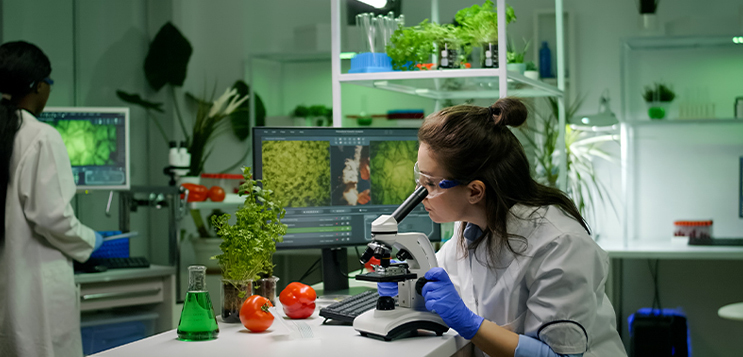
India’s agriculture is at a crossroads. Challenges such as rising climate pressures, dwindling resources, and the urgency of global sustainability commitments, are starting to take a toll on the industry. However, thanks to recent advancements in genetic engineering, promoting sustainable agriculture might just be possible.
Change Is Inevitable
Unpredictable weather, water scarcity, declining soil health, and rising pest pressures have made traditional farming methods increasingly unsustainable. Adding to the challenge, global markets, especially Europe, are now insisting on greener, cleaner, and climate-resilient produce, driven by stricter trade and environmental norms under the Green Deal framework.
Therefore, adopting sustainable practices is becoming increasingly more necessary, if Indian farmers are to command higher prices for their goods in export markets.
But transitioning to sustainable agriculture is no easy task. Amongst the promising solutions, genome editing stands out as a novel method towards revolutionising Indian agriculture.
Genome Editing in Indian Agriculture
Moving beyond conventional genetically modified crops, scientists are now exploring genome editing, which is a more precise, faster, and often less controversial method. Technologies like CRISPR-Cas allow for targeted edits in a plant’s own DNA, without the insertion of foreign genes.
A recent breakthrough came with the development of two genome-edited rice varieties: DRR Rice 100 (Kamla) and Pusa DST Rice 1. Developed using CRISPR, they require less water, emit fewer greenhouse gases, and deliver higher yields, all while maintaining grain quality. Kamla, for example, matures 20 days earlier than its parent, saving water and reducing methane emissions. Pusa DST, meanwhile, thrives in saline soils, boosting productivity in previously difficult conditions.
However, these aren’t isolated wins. Across the country, over 16 research institutions are working on genome-edited variants of crops like maize, bananas, mustard, groundnut, and chickpeas. The main focus here is to improve on traits such as drought tolerance, better nutrition, and pest resistance.
Green Deal Alignment
By requiring less irrigation, the new rice varieties can help save an estimated 7,500 million cubic meters of water. In addition, by reducing the duration of flooding in paddy fields, they curb methane emissions. Hence, potentially cutting agricultural greenhouse gases by 20% in rice cultivation.
Moreover, crops bred for pest and disease resistance also reduce the dependence on chemical pesticides. This minimises pollution, safeguards biodiversity, and protects farmer health, all of which are key Green Deal objectives.
Regulatory Shifts: A Faster, Clearer Path Forward
Historically, India’s regulation of genetically modified (GM) crops has been cautious. For example, Bt cotton remains the only commercially approved GM crop. But in a landmark move in 2022, the Indian government created a new pathway for genome-edited crops that don’t introduce foreign DNA. These SDN 1 and SDN 2 category crops now face lighter regulatory scrutiny, which is a decision that mirrors the stance of over 30 other nations.
Still, concerns remain. Activists fear unintended consequences, off-target mutations, and threats to seed sovereignty. While science supports genome editing as safe, public perception often lags. Therefore, building trust will require transparent testing, communication, and equitable access, especially for farmers who do not operate at scale.
Lessons from Bt Cotton
India’s experience with Bt cotton can offer valuable insights. The crop helped reduce pesticide use and initially boosted yields, but over time, new pests emerged that required even more pesticides than before. As a result, all the progress that was made eventually plateaued. For genome-edited crops to succeed, it is important to take a page from history. That means ensuring affordability, availability, and adequate extension services so that farmers understand how to get the best from these new seeds.
A Strategic Fit with National Goals
India’s genetic research push aligns seamlessly with national climate and agriculture policies, particularly the National Mission for Sustainable Agriculture (NMSA) and the National Action Plan on Climate Change (NAPCC). These programs aim to enhance resilience, improve resource efficiency, and promote climate-smart farming. Genome-edited crops that reduce water use, limit emissions, and boost productivity are tailor-made to support these goals.
For genetic engineering to become a pillar of sustainable farming, it must win over hearts and minds of farmers, consumers, regulators, and finally, global markets. If done right, it can help India meet both its domestic needs and international sustainability expectations.
